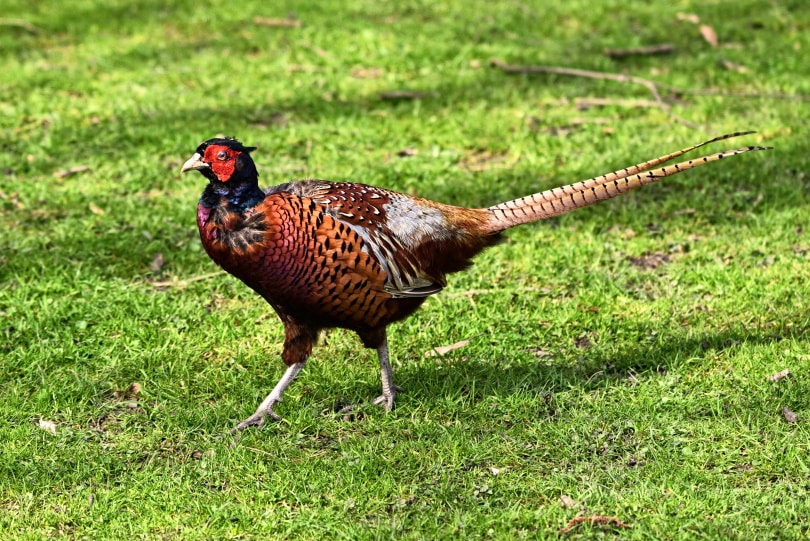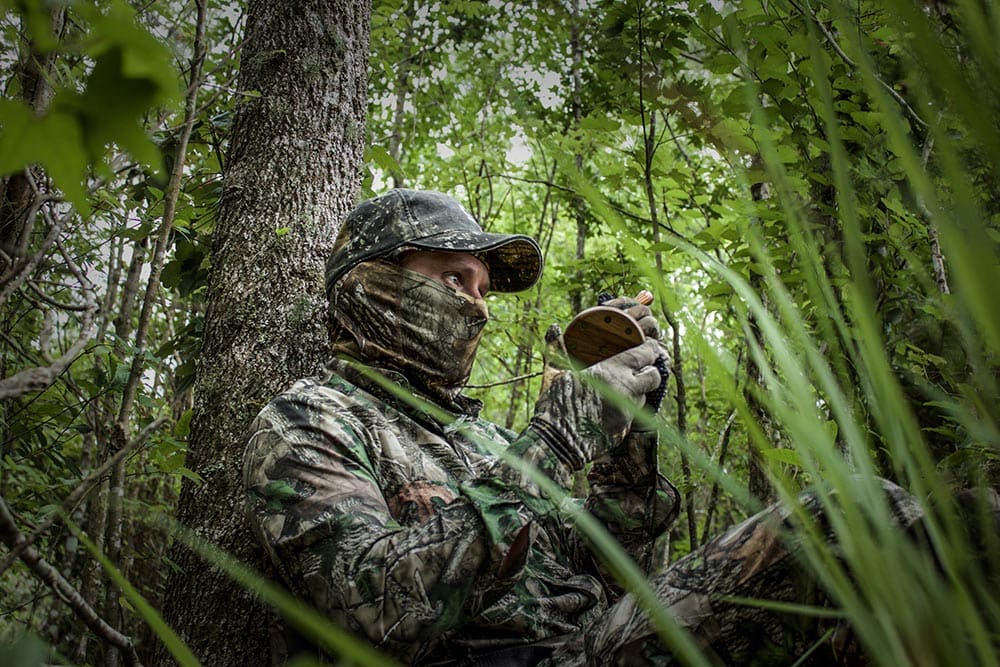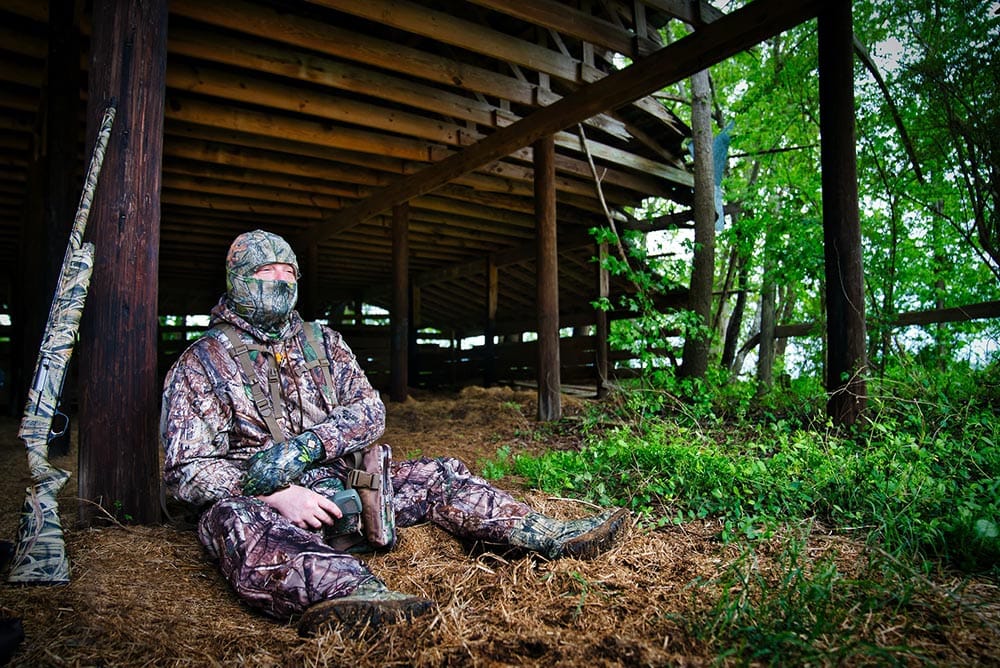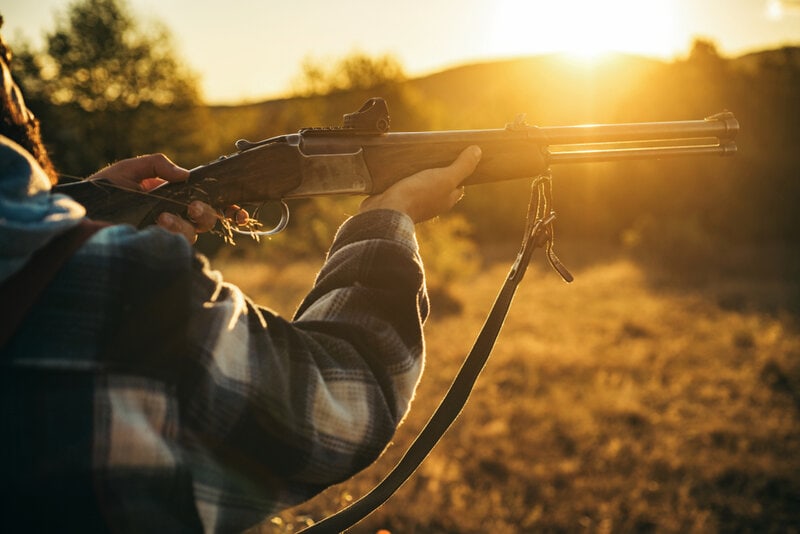How to Hunt Pheasant Without a Dog — 12 Basic Tips & Tricks
Last Updated on

While there’s no doubt that it’s easier to hunt pheasants with a trained hunting dog, those dogs are expensive and not everyone can get one. But just because you don’t have a hunting dog doesn’t mean you need to sit out the pheasant season.
It’s going to be a bit challenging, you’ll need to have patience, and you won’t get as many pheasants, but you can still have success. Here are 12 different tips and tricks to follow to get a few pheasants without a hunting dog!
How to Hunt Pheasant Without a Dog — 12 Basic Tips & Tricks
1. Use Linear Cover
Pheasants love linear cover, so if you’re trying to hunt for them, that’s where you need to flush them out. Rows of trees, fence lines, and anywhere else the pheasant can hide are perfect hiding spots.
However, bear in mind that pheasants love this type of cover because it lets them hide while keeping an eye out for danger.
So, when you’re hunting for pheasants in linear cover without a dog, you need to push them down to the end without giving them the opportunity to run around you. They won’t flush out until they reach the end of the cover, and that’s when you can take your shot.

2. Be Patient
If you’re out hunting pheasants without a dog, plan to make a day of it. Moreover, don’t expect to see any pheasants for a few hours.
Pheasants can be notoriously tricky to flush without a dog, so if you lose your patience quickly, they’re just going to run circles around you — literally.
Take your time when flushing them, plan to stay out there for a few hours, and remember that just because you don’t see a pheasant right away, that doesn’t mean they’re not out there.
3. Find the Right Location
If you want to get a pheasant, you need to go where there are pheasants. This means you should do your homework before you head out, so you’re not clearing out an empty area.
Head out a few times to monitor flight patterns and see where the pheasants are landing and hanging out, and try to track down prime pheasant locations.
While you can’t always guarantee that you’ll pick a spot with pheasants, with a bit of homework, you can tilt the odds in your favor.

4. Go in a Group
While the best hunting companion for pheasants is a dog, if you don’t have a hunting dog, the next best thing is a few of your buddies. When you’re hunting in a group, you can work together to flush out pheasants and cut down on the angles on where they can run around you.
Use your group effectively, and be sure to double down on safety precautions, but if you’re looking to get a few pheasants on your next trip, get a few friends together, and you’ll drastically increase your chances.
5. Use a Game Plan
You don’t want to go to the woods and just hope for the best. If you’re hunting in a group, figure out a plan before you head out and assign roles to each person.
If you’re hunting alone, come up with a game plan on how you’ll flush the pheasants without them getting around you. Know where you’re going beforehand. This way, you don’t waste time on a subpar location only to realize that the better choice was just across the field.
Planning ahead is the best thing that you can do to increase the likelihood of a successful dog-less pheasant hunt.

6. Take Ethical Shots
Once you down a pheasant, you usually have a dog go retrieve it. When you don’t have a dog, you’ll have to do that yourself. It takes longer, and it gives more time for a wounded pheasant to relocate.
This means the pheasant can die a slow, painful death somewhere, and you won’t even get to collect the bird. Therefore, don’t take high-risk shots. Only bring them down when you have a clear line of sight.
Additionally, always follow them down to see where they land and retrieve them right away. In short, be an ethical hunter.
7. Shoot Twice
You might think that you killed the pheasant with the first shot. Be sure. The easiest way to do this is to take a second shot at them while they’re falling.
If the first shot didn’t kill the pheasant, if you hit with the second shot, it should. Not only is this a more ethical way to bring down the bird, but it also increases the chances that the pheasant will still be there when you finally get over there.

8. Zigzag If You’re Alone
While it’s best to hunt in teams if you don’t have a hunting dog, if you’re alone, you’ll want to zigzag from location to location to get a better field of view and cover more area.
However, when you’re clearing out an area, you don’t want to leave that area. Zigzagging through the brush to ensure that pheasant can’t get behind you is still a good idea, though.
9. Go Before or After a Storm
Sometimes, a pheasant wants to stay hunkered down. That’s not the ideal situation for hunters that need them to flush out to shoot them.
The good news is that pheasants are most active before or right after a storm. They either want to go get a meal before they have to hunker down because of the storm, or they’re hungry again now that the storm has passed.
Knowing this will make it easier to spot flocks of pheasants, track down the right location, and flush them out when the time comes.

10. Circle Back
You might think that there’s no way that a pheasant can get around you while you’re clearing out an area. But unless you’re using a dog, think again. Pheasants are small and quick, and have no problem trying to run around you to get away.
Therefore, always circle back in an area that you just cleared. If the pheasant thinks that you’re going to hang out there for a while and that they’ll have to keep going back and forth, chances are that they’ll flush out to try to find a more stable area to hunker down.
Your best success may come when you’re re-clearing an area that you already cleared out. So, circle back and double-check the area that you just cleared. There’s a good chance that you’ll flush a pheasant or two on the second pass.
11. Go Slow
You may think that you can clear out an area at lightning speed, and there’s no way that a pheasant will get around you. Think again. Go slow — really slow.
The longer the pheasant thinks that you’re going to hang out in an area, the more uncomfortable you’re going to make them. The entire point of clearing out an area is to get the bird uncomfortable enough to try to fly away, so the slower you go, the better.

12. Hunt Downwind
Pheasants have an outstanding sense of smell, and if they can smell you coming, they’re going to fly off long before you even get close to them.
Hunting downwind carries your scent away from the birds and lets you get closer to them before they flush. Also, avoid wearing any perfumes or colognes when you’re heading out to hunt — these will give your location away and you’ll never get close to a pheasant.

Conclusion
Don’t think that you need a hunting dog to get pheasants. While they certainly make the job easier, you can have plenty of success without a furry companion out there with you.
So, the next time that pheasant season comes around, get your gear, map out your location, and head out — and don’t worry about the dog.
Featured Image Credit: Piqsels
Table of Contents
About the Author Robert Sparks
Robert’s obsession with all things optical started early in life, when his optician father would bring home prototypes for Robert to play with. Nowadays, Robert is dedicated to helping others find the right optics for their needs. His hobbies include astronomy, astrophysics, and model building. Originally from Newark, NJ, he resides in Santa Fe, New Mexico, where the nighttime skies are filled with glittering stars.
Related Articles:
How to Collimate Binoculars: 9 Expert Tips
How to Clean a Rifle Scope: 8 Expert Tips
How to Choose Binoculars for Bird Watching: 10 Expert Tips
10 Types of Hummingbirds in Arkansas (With Pictures)
8 Types of Hummingbirds in Nebraska (With Pictures)
5 Types of Hummingbirds in Idaho (With Pictures)
3 Types of Hummingbirds in Mississippi (With Pictures)
8 Types of Hummingbirds in Kansas (With Pictures)
